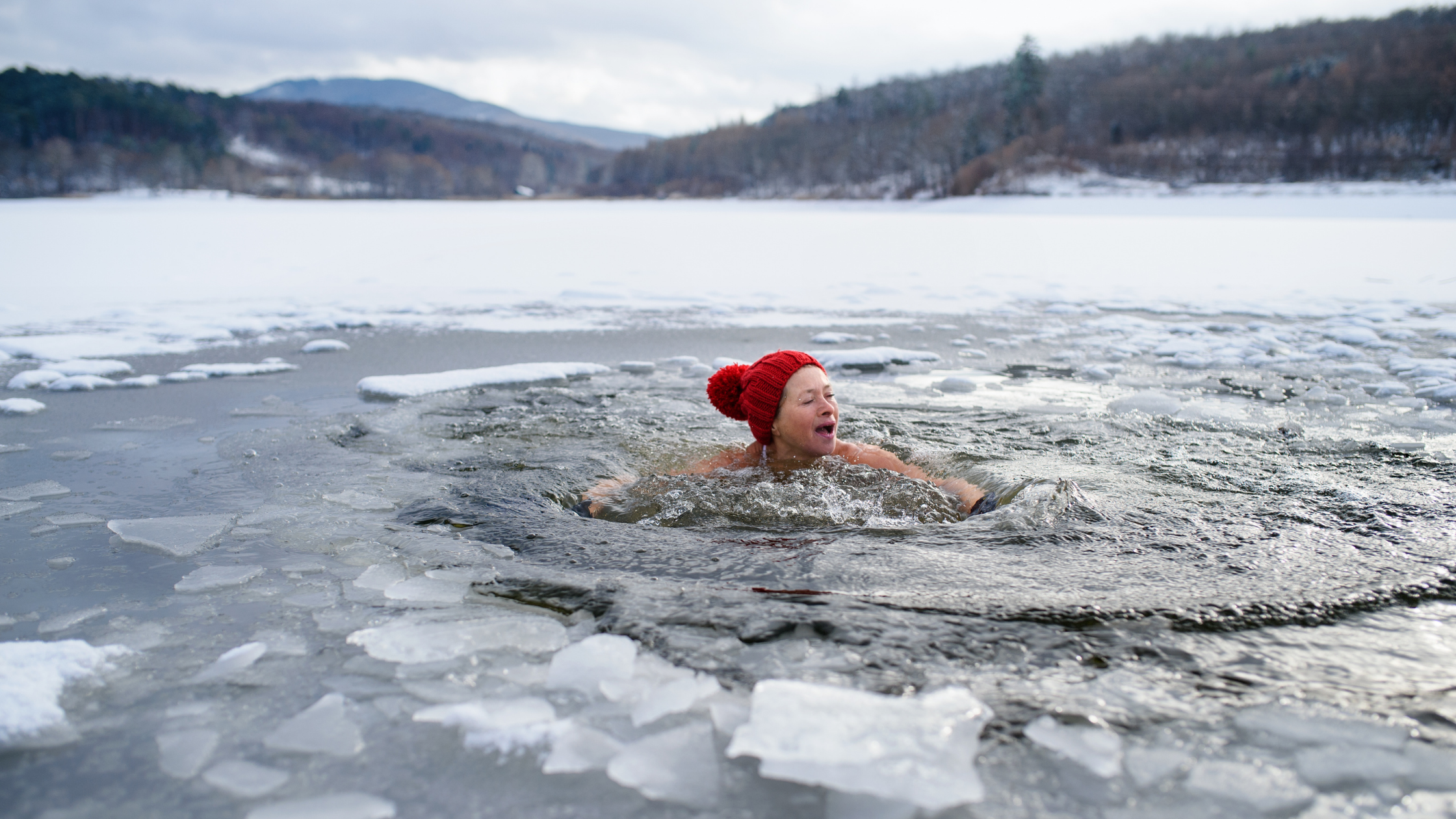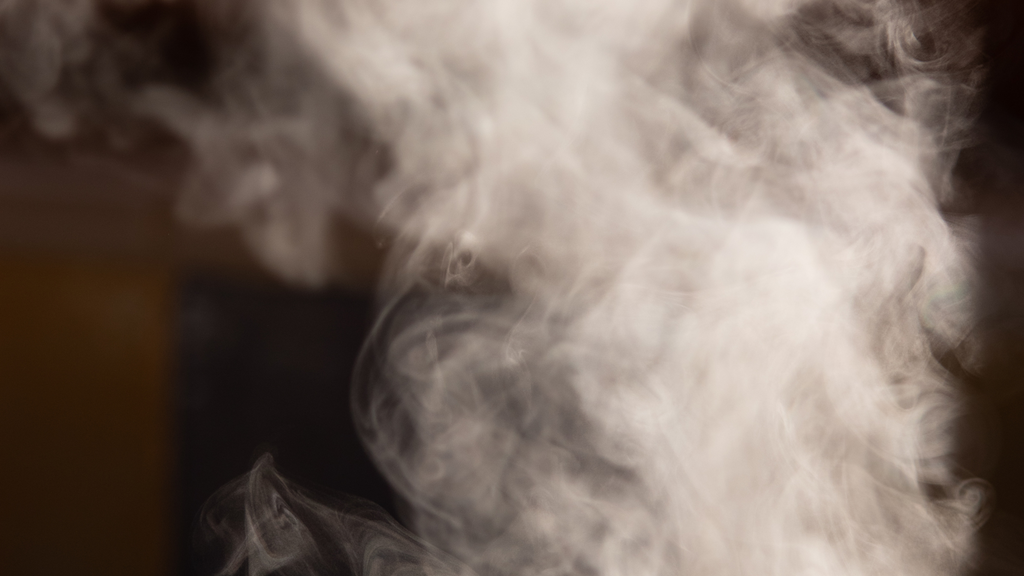Hot Therapy vs. Cold Therapy: What are the benefits for anti-aging?

People like comfort. If we are too hot or too cold, we can be miserable. And with today’s modern conveniences, it’s as easy as turning up the heat or turning on the air conditioning to adjust our environment to the perfect temperature. But, being constantly in a state of comfort might actually speed up the aging process.
A certain level of physical stress can be good for you

Everyone knows that exercise is a good thing. It works our heart and lungs and puts our bodies into a state of temporary stress. Of course too much of a good thing can be bad, but most of us won’t push our bodies to that limit. And most of us simply don’t like exercise. But we choose to do some level of cardiovascular work because it pays off in the long run.
Hot and cold therapy are two forms of physical stress on the opposite ends of the spectrum. Like exercise, it pushes the body into an uncomfortable state which in turn, provides benefits that can help us out as we get older.
Some of the benefits for hot and cold therapy are:
-
Helps circulation
-
Stimulates the immune system
-
Helps your body adjust to intolerance of extreme temperatures
Now that you know the benefits, let’s take a look at the therapies.
Hot therapy

The most well known hot therapy is a sauna. “Sauna” is a Finnish word that means “an earth or snow pit.” Although saunas started as holes in the ground, modern saunas are made of wood (and smell amazing!) and occasionally tile.
When you sit in a sauna, it raises your core body temperature. This process is called hyperthermia and is a way to balance the body. It also acclimates you to be able to deal with heat. Today’s saunas are heated with electricity and depending on the source of heat, the temperature range varies widely. A standard electric heater works by warming the air from 158 - 212 degrees Fahrenheit (70 - 100 Celcius). The warm air transfers the heat to the body.
Infrared heaters work with thermal radiation, so the air and the body are heated directly. These aren’t quite as hot and range from 113 - 140 degrees F (45 - 60 C).
Humidity differs depending on the type of sauna. A steam sauna is considered a wet sauna. It’s job is to get you to sweat and stay sweaty by keeping the humidity above 50%. Dry saunas have low humidity. These are the ones that sometimes have rocks you can pour water on- this slightly increases the humidity, but overall, the sauna stays in the 15-20% range.
What happens when we get hot?

As previously mentioned, the heat causes physical stress. This in turn creates a response called a thermoregulatory response that restores homeostasis, or balance, to the body. For example, if you go outside on a really hot day, your blood vessels dilate and you start to sweat. This cools the skin as your body attempts to make itself comfortable. You heart also works harder to supply the body with oxygen.
Someone who uses a sauna regularly has trained their body to adjust to the heat. Another interesting phenomenon called “hormesis” takes place. This is when something that causes stress becomes a benefit in small doses. When hormesis kicks in, it can boost cellular repair. The body does start to acclimate though, whether it is to temperature or other stressors. For example, exercise causes hormesis, which is why experts say to change up your workout routine so your body doesn’t get used to it.
Heat shock proteins
Our bodies produce heat shock proteins when exposed to the stress of extreme heat. Some cells in our bodies are not happy with the heat or other stressors, it can cause damage to some cells. So heat shock proteins come to the rescue and to help with the repair process. These proteins are good because they may potentially protect us against diseases such as Alzheimer’s and Parkinson’s.
Regular sauna use can help your body make heat shock proteins. But keep in mind that sauna use isn’t for people with certain medical conditions. Anyone with low pressure or someone who has suffered a recent heart attack or stroke should talk to their doctor first. But in general, sauna use is considered safe.
Other forms of heat therapy

Using a sauna for heat therapy has been widely accepted, but other forms do exist.
Hot yoga
Have you ever heard of “hot yoga”? This is yoga done in a room, generally heated with infrared heat. Hot yoga and other forms of exercise in the heat can increase your stamina and endurance. Just like the sauna, your body will produce heat shock proteins. Hot yoga studios can be found in most major cities.
Natural hot springs
They aren’t common, but hot thermal water spas or hot springs can occur naturally. There are mineral baths that the earth has warmed with geothermal energy. They are normally over 100 degrees Fahrenheit. They tend to occur in areas with volcanoes.
Sauna blankets
Though they aren’t well known yet, sauna blankets solve a couple of problems for people who would like a personal sauna. First of all, they are not as expensive. And secondly, a blanket takes up next to no space. Sauna blankets work by cocooning your body. You simply crawl in, relax, warm up and enjoy the benefits.
Cold Therapy
Heat therapy doesn’t sound so awful to most people. There is something to be said about being warm and cozy. Most people prefer warmer seasons over winter. But the idea of a sudden jolt of freezing cold just doesn’t sound appealing. We are hot blooded, so unless it’s really hot and sticky outside, we’d definitely prefer not to shock our bodies into the cold.
What happens when we get cold?

But like hot therapy, cold therapy stresses the body in a beneficial way. Have you ever heard of athletes taking an ice bath? Or even people who do those polar plunges- when they jump into a freezing cold body of water on a winter day, usually as a fundraiser or a fun event. It is definitely shocking, but some people keep coming back for more because, believe it or not, it’s addicting.
Cold therapy does the same as hot therapy, but on the other side of the thermometer. Just like with hot therapy, the body reacts by hormesis, which allows it to better tolerate stresses. We get goosebumps, our muscles tense up, and blood vessels constrict to keep that heat inside. People start to shiver while our hearts beat faster.
You can develop hypothermia when your temperature drops below 95 degrees Fahrenheit (35 Celcius). Moderate hypothermia occurs when the body’s temperature drops below 89.6 degrees Fahrenheit (32 C). Shivering stops, fine motor skills become difficult and reflexes are delayed. When hypothermia progresses, organs systems start to fail, blood pressure, respiration rate and heart rate will all fall. This can be fatal.
Cold Shock Proteins & Brown Fat
Just like hot therapy produces hot shock proteins, cold therapy produces cold shock proteins. Although they have not been studied as extensively as heat shock proteins, they do seem to have similar benefits.
In our bodies, we have brown fat and white fat. White fat is the stuff we know best- it stores energy and insulates. Brown fat, or brown adipose tissue is activated in the cold stress response and creates heat when we need it most. As we age, brown fat decreases. It may be linked to prevention of high cholesterol, improved insulin sensitivity, and bone health.
Forms of cold therapy

Please note that engaging in cold therapy can be dangerous, so always be sure to listen to your body, talk to your doctor, and have someone nearby if you want to try any of these methods!
Ice bath
This is the most well known form of cold therapy and the most readily available. A lot of athletic training facilities have ice baths on hand, or tubs designated for cold therapy. There are also cold water whirlpools. An ice bath can be done at home, which makes it accessible for anyone. A cold shower has similar benefits without the ice.
Outdoor exercise in winter
If you’ve ever lived in a cold climate, you may have seen people going for a jog when it’s freezing cold. These people are actually engaging in cold therapy, whether they know it or not. In addition to exposing their bodies to the cold, they take it one step further by shocking their heart and lungs. It’s a bit like hot yoga.
Whole body cryotherapy
You may have heard rumors about celebrities who are freezing their bodies through cryotherapy, in the hopes of being brought back to life someday. Whether or not that is true, cryotherapy does exist as a treatment in hospitals. It isn’t widely available yet, but spas are popping up so you can do it as an anti-aging treatment.
You stand in a chamber called a cryosauna and you are exposed to low temperatures for no more than three minutes. Your body reacts and when you’re done, the result is said to be improved circulation and a release of toxins. Your skin glows and your body will have created those precious cold shock proteins.
Combining hot and cold therapies for anti-aging

Since your body could use both hot shock proteins and cold shock proteins, why not combine the two therapies for the ultimate benefits (with approval from your doctor, of course). Doing both is invigorating and gives your body the physical stress it needs for cellular repair. The best part is that you can do this at home! It won’t be quite as extreme as something you can experience at a spa or gym, but there are still benefits.
- Start with a hot shower. You want the water as hot as you can comfortably stand it. The shower should last two to three minutes.
- Then… shock your body by switching the shower to cold. Let that go for fifteen to twenty seconds.
- Switch back to hot water.
- Repeat the process two more times (but no more!).
When you are switching the water temperature, you are stimulating the effects and getting your blood pumping. If the temperatures are too extreme, you can start with less hot and less cold water. Over time, you’ll build up tolerance and will be able to change the temperature.
There are many reasons to use hot and cold therapy in your quest to stay healthy as you age. Because both extremes get your heart beating, it has similar benefits to exercise. Scientists are still learning more about these therapies, so we’ll be sure to keep you up to date as research progresses.
In the meantime, check out some of our other blog posts about anti-aging topics!